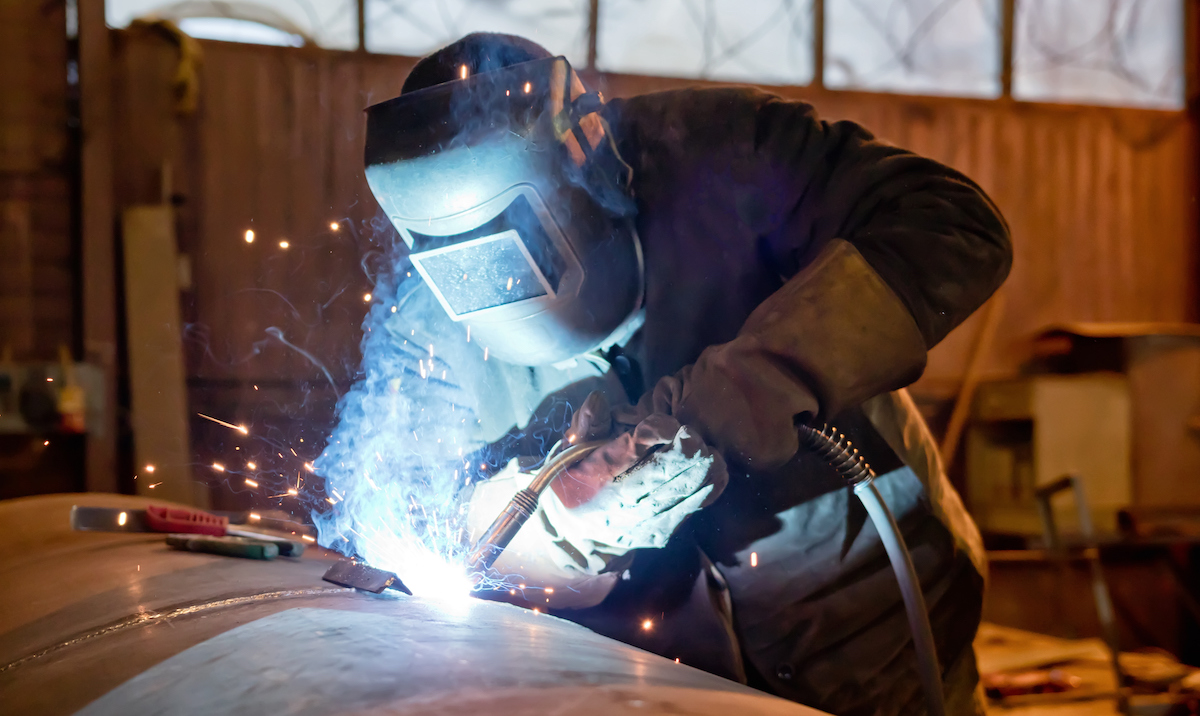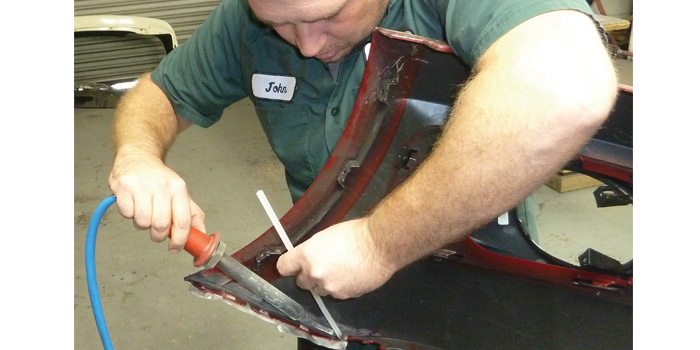Everything about Welding: Key Insights Into Techniques and Finest Practices for Success
Welding includes a variety of methods, each fit for certain products and applications. Comprehending these techniques, such as GMAW, SMAW, and TIG, is important for attaining ideal results. The right equipment and safety methods can not be overlooked. As prep work and repairing play critical roles in the welding procedure, grasping these components can greatly improve the top quality of the last product. What are the essential variables that guarantee an effective weld?
Comprehending Different Welding Techniques
Welding methods encompass a variety of approaches, each suited to particular applications and materials. Among the most common methods are Gas Steel Arc Welding (GMAW), Protected Metal Arc Welding (SMAW), and Tungsten Inert Gas Welding (TIG) GMAW, additionally known as MIG welding, is preferred for its speed and flexibility, making it suitable for slim materials. SMAW, or stick welding, is favored for its simpleness and efficiency in outdoor environments, especially with thicker metals. TIG welding uses precision and control, making it ideal for elaborate job and non-ferrous metals (Montana Mobile Welding and Repair Belgrade). Each technique has its special advantages and factors to consider, permitting welders to select the very best approach based on the job's requirements, material type, and wanted outcomes. Recognizing these methods is vital for effective welding
Necessary Welding Equipment and Devices
While various welding techniques call for particular abilities, the best tools and tools are similarly important for accomplishing quality outcomes. Vital welding devices includes welding devices, which vary depending upon the method-- such as MIG, TIG, or stick welding. Protective equipment, including gloves, helmets, and aprons, guarantees safety and security and comfort throughout the process. Additionally, clamps and fixtures assist safeguard products in location, guaranteeing accuracy in welds. Consumables like welding rods, cord, and protecting gas are also essential parts that affect the top quality of the weld. Tools such as mills and cutters facilitate surface area prep work and post-weld finishing, adding to a professional result. Purchasing high-grade tools eventually improves the effectiveness and performance of welding tasks.
Safety And Security Practices in Welding
Proper safety techniques are crucial in the welding market to safeguard workers from possible dangers. Welders have to use proper personal safety devices (PPE), including safety helmets with proper shading, gloves, and flame-resistant garments. Sufficient air flow is important to lower exposure to unsafe fumes and gases created during the welding procedure. Additionally, workers ought to be learnt the proper handling of welding devices to avoid crashes. Fire security measures, such as keeping flammable products far from the welding area and having fire extinguishers readily offered, are required. Routine inspections of equipment and work areas can aid determine potential risks prior to they lead to mishaps. By adhering to these safety techniques, welders can produce a more secure working setting and reduce dangers connected with their trade.
Preparing Products for Welding
Preparing products for welding is an important action that significantly affects the quality and integrity of the end product (Fabrication). Appropriate preparation entails cleaning the surfaces to remove contaminants such as dirt, rust, and oil, which can compromise the weld. Methods such as grinding, fining sand, or making use of solvents are typically employed to achieve a clean surface. Additionally, making sure that the products mesh well is essential; gaps can lead to weak welds. It's also important to consider the alignment and positioning of the components, as this will affect the simplicity of welding and the final end result. Ultimately, picking the proper filler material and guaranteeing compatibility with the base metals is essential for accomplishing solid, resilient welds
Tips for Getting High-Quality Welds
Accomplishing high-quality welds calls for attention to information and adherence to best techniques throughout the welding procedure. Correct joint preparation is crucial, making sure surface areas are tidy and cost-free from impurities. Choosing the proper filler product and welding method based upon the base metals is essential for ideal bonding. Keeping consistent traveling rate and angle while welding can promote and prevent issues uniformity. Furthermore, controlling warm input is crucial; too much warm can cause warping and damaged joints. On a regular basis evaluating the welds during the procedure enables prompt changes if necessary. Employing ideal post-weld therapies, such as cleansing and tension relief, can boost the toughness and stability of the weld, eventually making sure an effective result.
Repairing Usual Welding Issues
Welding typically offers obstacles that can impact the top quality and honesty of the last item. Typical issues such as porosity, inconsistent weld grains, and overheating can occur, each requiring specific repairing methods. Comprehending these issues is crucial for welders to improve their skills and achieve ideal outcomes.
Porosity Issues Clarified
Although porosity can usually be ignored, it remains a critical concern in welding that can jeopardize the honesty of an ended up product. Porosity refers to the existence of tiny gas pockets within the weld grain, which can deteriorate the joint and lead to premature failure. This trouble usually arises from contaminants, dampness, or improper protecting gas insurance coverage during the welding process. To alleviate porosity, welders must validate that the base materials are completely dry and tidy, use appropriate protecting gases, and maintain consistent welding parameters. Regularly inspecting the devices and setting can also assist determine potential problems prior to they manifest in the weld. Attending to porosity properly is essential for attaining solid, durable welds that meet top quality criteria.

Inconsistent Weld Beans
Inconsistent weld grains can considerably impact the top quality and stamina of a completed product. Different factors add to this issue, including inappropriate travel speed, wrong amperage settings, and inconsistent electrode angles. When the welder find relocates too quickly, a bead may show up slim and lack penetration, while relocating too slowly can cause extreme accumulation. Additionally, making use of the wrong amperage can lead to either damaging or too much spatter, both of which concession weld stability. The welder's strategy, such as irregular lantern activity, can additionally cause uneven bead appearance. To reduce these troubles, welders ought to concentrate on maintaining stable, controlled activities and guaranteeing appropriate tools setups to achieve uniformity in their welds. Uniformity is essential to attaining trusted and solid welds.
Getting Too Hot and Warping Issues
Too much warmth during the welding process can result in considerable overheating and deforming problems, impacting the structural integrity of the workpiece. These problems typically materialize as distortion, which can compromise placement and fit-up, making further setting up testing. Aspects adding to overheating consist of the option of welding parameters, such as voltage and travel rate, along with the kind of product being bonded. To alleviate these problems, welders ought to keep constant traveling speed and appropriate heat input while keeping track of the work surface temperature. Furthermore, preheating or post-weld warmth treatment can assist alleviate tensions triggered by quick air conditioning - Montana Mobile Welding and Repair Belgrade Welding. Regular examination and adherence to finest methods are crucial in preventing getting too hot and making sure the longevity and integrity of welded frameworks
Often Asked Questions
What Are the Profession Opportunities in the Welding Industry?
The welding industry provides varied profession chances, consisting of placements as welders, inspectors, teachers, and designers. Professionals can function in manufacturing, building and construction, aerospace, and automotive sectors, gaining from strong demand and competitive wages in different roles.
How Can I Boost My Welding Speed Without Giving Up Quality?
To enhance welding rate without giving up high quality, one should practice efficient methods, maintain equipment, optimize setups, and boost hand-eye coordination. Routine training and looking for responses can also considerably add to attaining Full Article quicker, premium welds.
What Certifications Are Offered for Welders?
Numerous qualifications exist for welders, consisting of those from the American Welding Culture (AWS), the National Center for Building Education and Research (NCCER), and various industry-specific companies. These credentials improve employability and show ability effectiveness.
Just How Does Welding Influence the Properties of Metals?
Welding affects the properties of metals by changing their microstructure, which can lead to modifications in firmness, ductility, and stamina. Heat input and cooling rates throughout the process significantly influence these product attributes.
Can I Bonded Dissimilar Metals With Each Other?
